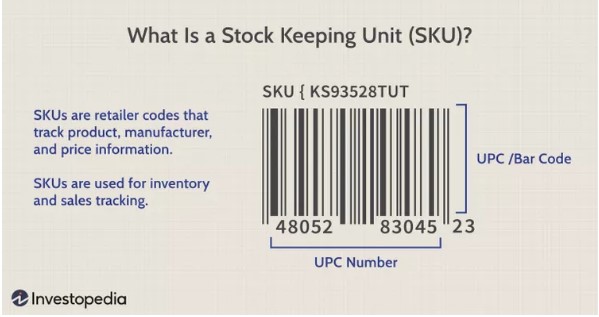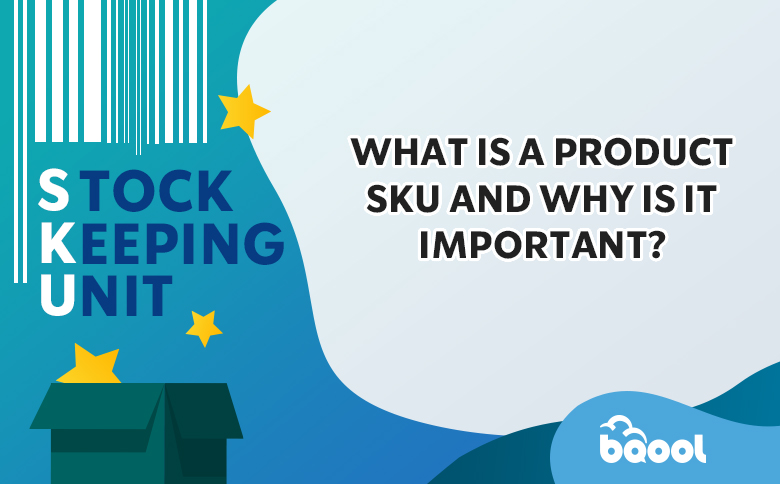What is a Product SKU and Why is it Important?
Mastering product identifiers like SKU, ASIN, UPC and GTIN is crucial for Amazon sellers. This guide demystifies these acronyms, explaining their significance in efficiently organizing and tracking product listings. Gain insights into creating the perfect SKU and best practices for streamlining your inventory management. In this article, we will dive into the details, explaining what each term represents and why it is essential to grasp their distinctions as an Amazon seller. We’ll also share best practices for creating the perfect SKU to streamline your catalog management. Among Amazon’s many acronyms, this resource illuminates the critical ones you need to succeed.
What are SKUs?
It is important for sellers to know about Stock Keeping Units as they are usually formed and allocated by the sellers. An SKU helps in stock keeping and tracking individual inventories easily. If you or your system can uniquely identify an item, it is easier to know the whereabouts of a product within your inventory. It also serves as shorthand for longer item descriptions. Instead of entering an entire name or a description of an item, you can use a much shorter item number in the form of an SKU. This may probably speed up the process of data entry and inventory management.
How To Create a SKU?
If you want to create a system that’s easier to work with and uses your own item numbers, here are some of our recommendations:
Make unique SKUs – SKUs should be unique, so you should probably never use an SKU again for a product you don’t sell anymore.
Keep the SKUs short – SKUs mostly will be maximum 30 characters long. If it is longer than 30 characters, then it becomes hard to interpret. Some sellers would stick to eight alphanumeric digits.
Maintain standard/uniform SKU format and avoid using SKU from manufacturer/supplier part
Avoid spaces or special characters – Use simple characters to make it simple and easy for your understanding.
Avoid product title in the SKUs – Use short and brief descriptions for the product title, not the SKU.
Never start your SKU with a zero – Never use “0” in the beginning of SKU as the Excel spreadsheet will strip out the 0 and mess everything up.
What is the Difference Between UPCs & SKUs?
While SKUs (Stock Keeping Units) and UPCs (Universal Product Codes) both play crucial roles in product tracking and supply chain management, they differ fundamentally in their nature and intended usage.
SKUs are internal identifiers meticulously crafted by businesses themselves, serving as the backbone of their inventory management systems. These unique codes are tailored to each company’s specific needs, allowing for granular tracking and organization of products within their operations.

https://www.investopedia.com/terms/s/stock-keeping-unit-sku.asp
What is GTIN?
When you create new product listings on Amazon, you need to provide a unique identifier known as a GTIN (Global Trade Item Number) for most categories. The previously discussed Universal Product Code (UPC) is a common GTIN sellers like to use. Amazon catalog relies on these universal product identifiers to accurately categorize and track inventory. Here are the most widely used GTINs:
Universal Product Code (UPC)
International Standard Book Number (ISBN)
European Article Number (EAN)
Japanese Article Number (JAN)
On the other hand, UPCs are externally recognized codes that hold global significance. Licensed from GS1 US, a nonprofit organization establishing business standards worldwide, UPCs are universally accepted Global Trade Item Number that enable seamless communication and synchronization across the entire supply chain ecosystem.
What is an ASIN?
As we mentioned previously acronyms can be tricky and really challenging especially for newbies. When you resell on Amazon you need to pay attention to the Amazon Standard Identification Number (ASIN) which is a type of Amazon internal catalogue number. Each ASIN is unique and always associated with a particular product or product variation. Every ASIN will be 10 digits and consist of a combination of letters and digits.
In the case of books with a 10-digit ISBN number, the ASIN will be the same. For all other products, a new ASIN is created when the product is distributed via Amazon.
https://sellercentral.amazon.com/help/hub/reference/G201844590
We hope this article has shed light on the various product identifiers and acronyms you’ll encounter when selling on Amazon. While understanding terms like SKU, ASIN, UPC, and GTIN is essential, it’s merely the tip of the iceberg. Before diving into reselling on Amazon, there’s a myriad of other factors to consider beyond just product listings. From adhering to Amazon’s policies and guidelines to optimizing your operational processes, a thorough grasp of the platform’s intricacies is crucial for ensuring a smooth and successful online selling experience.










